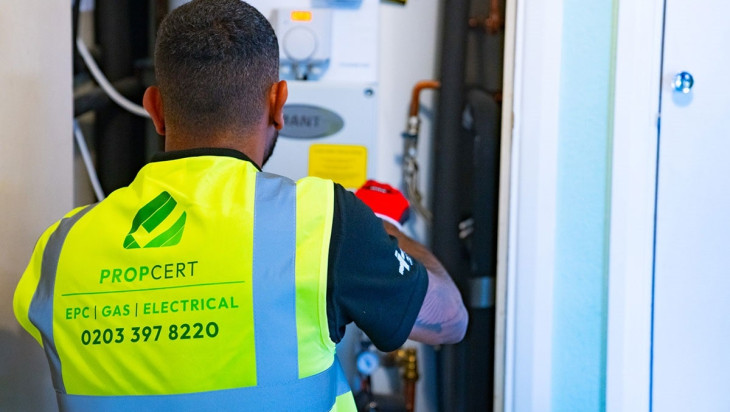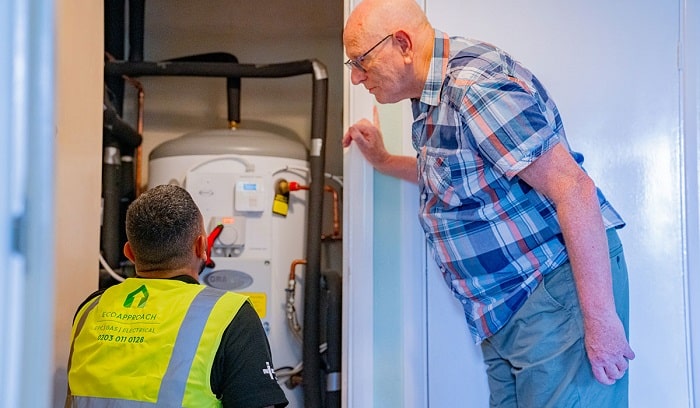
A boiler is an essential part of homes and businesses. It heats spaces and provides hot water in taps and showers. A boiler is essentially connected with radiators through an extensive pipework, which runs across the entire building. In large units, it is an important part of the central heating system. To work perfectly, the boilers need appropriate pressure. Any deviation from the standard pressure results in malfunction, which may end up in a complete shutdown as well. While water pressure lower than the standard level might not pose any serious physical danger, it often results in no heat and an inconsistent hot water supply.
A higher water pressure, on the other hand, is a seriously dangerous event, as it may end up in the bursting of pipework or water leaks from the boiler itself. That’s why keeping a watch on the water pressure in your boiler is so important. A lower boiler pressure, once or twice in a year, is just a routine matter, whereas a frequent drop in pressure is something that needs immediate attention. In most cases, you can easily raise the boiler pressure yourself, without calling the engineer. However, it is important for you to understand the whole process to avoid any mishandling.
This blog will guide you through the entire process, so you can easily manage your boiler pressure.
When talking about the water pressure, it is crucial for you to be clear on what the standard or appropriate level is for optimum performance of a boiler. The water pressure of a boiler is prominently visible on it in the majority of boilers. Normally, the pressure meter is in the form of a dial with a pointer needle. In this type of pressure meter, the standard level of water pressure is marked green on the dial. In most recent versions of boilers, the pressure meter comes in digital form, giving the exact pressure level displayed in digital numbers.
In any case, the standard or perfect water pressure should range somewhere between 1 and 1.5 Bars when the radiator is cold. On the other hand, when the radiators are hot, the pressure may rise beyond 2.5 bars or sometimes even up to 2.75 bars. Anything less than or higher than this range is considered abnormal pressure, which needs immediate attention.
Releasing excessive pressure is usually done through bleeding the radiators or by releasing the pressure through pressure relief valves. In the event of a drop in pressure, below 1 bar, you need to increase the pressure instantly; otherwise, there will be no heating in your building.
The water pressure of a boiler is directly related to the amount of water present in the boiler system. A reduced pressure simply means that the volume of water in the boiler has decreased. That otherwise means you need to top up the volume of water in your boiler. All boilers are equipped with a proper system to increase water pressure by allowing it to flow into the boiler.
Under normal circumstances, a boiler should function flawlessly, without any noticeable pressure drop. Slight deviation in the pressure can occur often, which is just normal. This often happens due to very minute leaks or sometimes due to excessive bleeding of radiators.
On the other hand, a noticeable low pressure is a sign of some fault in the system, mainly being the excessive water leaks. Here are some major causes of low water pressure in your boiler:

Once you have detected lower pressure in your boiler, the only remedy is to increase the pressure by injecting more water into it. The process is quite simple and often similar for most of the boilers. Most of the newer versions of combi boilers are equipped with a water filling loop, which facilitates topping up the water pressure. Some other boilers come with an internal filling key.
Maintaining a perfect water pressure in a boiler is crucial for its optimum performance. A higher pressure may result in damaging the internal parts as well as the bursting of the pipework. It may also cause water leaks. On the other hand, a lower pressure may not be a dangerous proposition, but it results in improper performance of a boiler. In the case of low pressure, you may experience no heat and a lack of hot water in taps and showers.
An occasional drop in pressure once or twice a year is just normal, but frequent lowering of the water pressure is something more serious. You may try to top up the pressure by following the SOPs, but if the pressure drops again, you need to call the gas safe registered engineer to find the actual problem. Always remember that only a gas safe registered engineer is authorized to work on a gas boiler.
Fill the required information to order a gas safety certificate instantly.
Are you curious about your Gas Safety Certificate? With these simple steps, learn how to check its status and ensure your peace of mind.
Find out why your boiler is vibrating loudly. Explore causes, troubleshooting tips, and the importance of prompt repairs for a quiet and efficient heating system at home.
Gas engineers perform a gas safety check to ensure your gas appliances are safe. Read to learn what more you can expect from the gas safety check.
Learn about the importance of gas safety certificates for landlords and the legal consequences of not having a valid certificate.
Know your tenant rights: How long can a UK landlord leave you without hot water? Stay informed, assert your rights.
Every landlord in the UK is legally bound to follow gas safety regulations as per the Gas Safety (Installations and Use) Regulations 1998.
Fill out the following enquiry form and we will contact you as soon as possible.